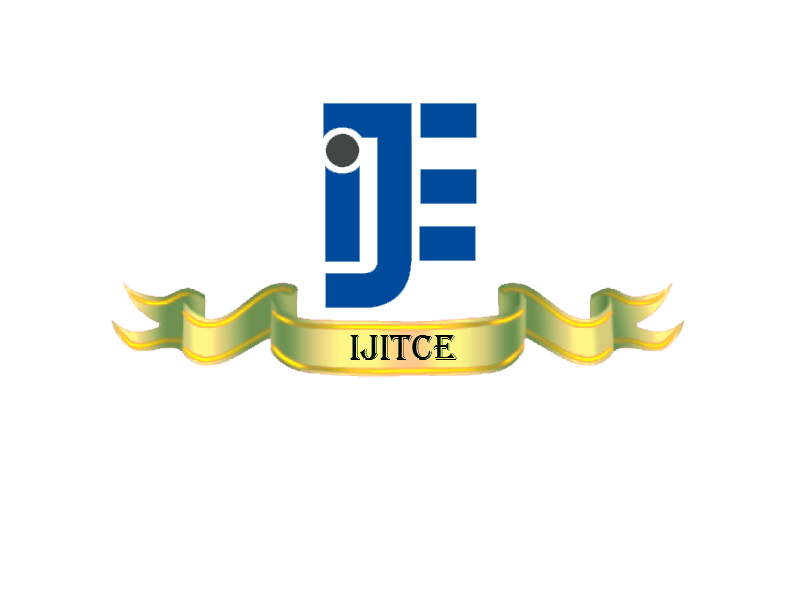November 2017 Issue Vol.7 No.11
Top-k Query Processing and Malicious Node
Identification Based on Node Grouping in MANETs
https://ia601506.us.archive.org/5/items/vol7no11/vol7no11.pdf
Dr.T.Ranganayaki
Associate Professor, Dept of Computer Science,Erode Arts And Science College (Autonomous), Erode, Tamil Nadu, India
D.Gobika
M.Phil., Research Scholar, Dept of Computer Science,Erode Arts And Science College (Autonomous), Erode,Tamil Nadu, India
Abstract:
Autonomous wireless nodes without fixed
infrastructure are connected to construct the Mobile Adhoc
Networks (MANET). The MANETs are build and used
in the military, commercial and disaster management
operations. The data provider node provides its data to
other wireless nodes. The shared data values are
transferred with reference to the query received from
other nodes. All the request and response elements are
passed through the path nodes. The query request and
reply are transmitted with different routing schemes. The
query request and reply operations are carried out to
access the data values under the data providers. The
query value is broadcasted to all the nodes in the
MANET. The top-k data elements are produced as reply
for the queried node through different routes. The reply
data can be changed in the intermediate node. The
malicious data modification activity is referred as Data
Replacement Attack (DRA). Query reply verification is
carried out to detect the malicious node discovery
process. The clustering process groups the neighbor
nodes with resource and proximity information. The
malicious node detection is carried out in cluster level
with local and global verification schemes. The malicious
node information is broadcasted as notification to all
nodes. The MANET data query scheme is composed with
data sharing and security features. Cluster construction
and malicious node detection operations are built with
data security. The malicious node discovery process is
improved with liar node and False Notification Attack
(FNA) discovery operations. The Message Authentication
Code (MAC) is prepared with confidentiality and integrity
verification schemes. The malicious node operations are
controlled using the Message Authentication Code. The
RSA algorithm, Advanced Encryption Standard (AES) and
Secure Hash Algorithm (SHA) are used for the data
confidentiality and integrity verification process.
Keywords:RSA,SHA,MAC,DRA,AES,MANET.
Noise Removal Technique for
Hybrid Images Using DirectionalWeighted Median Filter
https://ia601506.us.archive.org/30/items/vol7no1102/vol7no1102.pdf
Dr.S.Prasath
Assistant Professor, Department of Computer Science,Nandha Arts and Science College,Erode, Tamil Nadu, India
Abstract:
Visual information transmitted in the form of
digital images is becoming a major method of
communication in the modern age, but the image obtained
after transmission is often corrupted with noise. The
received image needs processing before it can be used in
applications. Image denoising involves the manipulation
of the image data to produce a visually high quality image.
This thesis reviews the existing denoising algorithms.
Different noise models including additive and
multiplicative types are used. They include Gaussian
noise, salt and pepper noise, speckle noise. The selection
of denoising algorithm is application dependent. Hence, it
is necessary to have knowledge about the noise present
in the image so as to select the appropriate denoising
algorithm. The filtering approach has been proved to be
the best when the image is corrupted. A quantitative
measure of comparison is provided by the peak signal to
noise ratio of the image.
Keywords:Noise,Filtering,DWMF,Image,PSNR,MSE.
Read complete November2017
Dr.S.Prasath
Assistant Professor, Department of Computer Science,Nandha Arts and Science College,Erode, Tamil Nadu, India
Abstract: Visual information transmitted in the form of digital images is becoming a major method of communication in the modern age, but the image obtained after transmission is often corrupted with noise. The received image needs processing before it can be used in applications. Image denoising involves the manipulation of the image data to produce a visually high quality image. This thesis reviews the existing denoising algorithms. Different noise models including additive and multiplicative types are used. They include Gaussian noise, salt and pepper noise, speckle noise. The selection of denoising algorithm is application dependent. Hence, it is necessary to have knowledge about the noise present in the image so as to select the appropriate denoising algorithm. The filtering approach has been proved to be the best when the image is corrupted. A quantitative measure of comparison is provided by the peak signal to noise ratio of the image.
Keywords:Noise,Filtering,DWMF,Image,PSNR,MSE.
